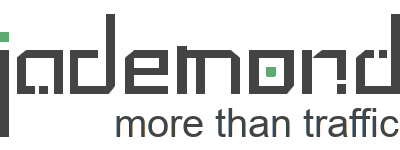Weibo (微博), launched in 2009 by Sina Corporation, is one of China’s leading social media platforms, often compared to a combination of Twitter and Facebook. As of 2024, Weibo has over 580 million monthly active users, making it a vital platform for brands, celebrities, influencers (KOLs), and individuals to share content, engage in discussions, and promote products or services.
Weibo’s open nature, which allows users to follow anyone and participate in public conversations through hashtags and trending topics, makes it a unique and powerful platform for marketing and community building in China. It is used for a wide range of purposes, from personal expression to brand promotion, news distribution, and influencer marketing.
Key Features of Weibo:
- Microblogging Format: Weibo allows users to post short-form content (originally limited to 140 characters but later expanded) similar to Twitter, making it easy for users to share quick updates, images, videos, and links. Posts can be public, allowing users to engage with a wide audience.
- Trending Topics and Hashtags: Like Twitter, Weibo uses hashtags and trending topics to drive discussions. The Trending Topic Board shows users the most talked-about subjects in real time, making it an excellent tool for brands to join relevant conversations and increase visibility.
- Verified Accounts (V Accounts): Weibo offers verified accounts, denoted with a “V” symbol, for public figures, brands, and influencers (KOLs). Verification builds trust with followers and enhances credibility, making it easier to gain a larger audience.
- Multimedia Content: In addition to text posts, Weibo supports multimedia content, including images, videos, GIFs, and live streams. This flexibility allows users and brands to create rich, engaging content that resonates with their audience.
- Fan Engagement: Weibo has built-in features to enhance fan engagement, including polls, Q&A sessions, and “Super Topics” (超话), which are user-driven communities centered around specific interests. These tools make it easier for brands and influencers to interact with their followers in meaningful ways.
- Weibo Ads: Weibo offers a range of advertising options, including in-feed ads, banner ads, and promoted trending topics. Brands can target specific demographics based on users’ interests, behaviors, and locations, making it a versatile platform for social media marketing.
- E-commerce Integration: Weibo is integrated with e-commerce platforms such as Taobao and JD.com, allowing users to shop directly through the app. Brands can link their products in posts and live streams, streamlining the customer journey from discovery to purchase.
Why Weibo is Important for Marketing in China:
- Large and Active User Base: With over 580 million monthly active users, Weibo remains one of the most influential social media platforms in China. It has a diverse user base, with a mix of young urban professionals, students, rural users, and businesses engaging with content daily.
- Open Public Conversations: Unlike WeChat, which is primarily a closed messaging platform, Weibo is public and open. Brands can easily join trending conversations, reach new audiences, and build communities by participating in hashtags or initiating campaigns.
- Influencer and KOL Marketing: Key Opinion Leaders (KOLs) are a driving force on Weibo. Brands frequently collaborate with KOLs to leverage their influence and reach new audiences. These influencers, often referred to as Weibo celebrities, can help brands build credibility and promote products or services effectively.
- Effective Crisis Management Tool: Due to its rapid dissemination of information, Weibo is a key platform for reputation management in China. Brands can use Weibo to address concerns, clarify misunderstandings, and provide real-time updates to their followers during a crisis.
- Tailored Marketing Campaigns: Weibo’s advertising options allow for highly targeted marketing campaigns. Brands can customize their ads based on user demographics, interests, and online behaviors. Promoted trending topics are particularly useful for generating buzz around a product launch or event.
- Engagement and Interaction: Weibo allows brands to engage directly with their audience, respond to feedback, and create interactive content such as polls, contests, and Q&A sessions. This creates a deeper connection with users, improving brand loyalty.
Weibo vs. WeChat:
While both Weibo and WeChat are popular in China, they serve different purposes:
- Audience Reach: Weibo’s open format allows content to be seen by a wider audience, making it better suited for public campaigns and brand-building. In contrast, WeChat is more focused on private interactions through messaging, official accounts, and mini-programs.
- Content Discovery: Weibo’s reliance on hashtags and trending topics enables users to discover new content easily, while WeChat is more closed, with users primarily interacting within their personal networks.
- Marketing Use: Weibo is better for public brand engagement, influencer collaborations, and real-time conversations, whereas WeChat excels at CRM, customer service, and targeted content distribution via official accounts.
Best Practices for Brands on Weibo:
- Leverage Trending Topics and Hashtags: By joining trending conversations and using relevant hashtags, brands can increase their visibility on Weibo. Creating branded hashtags or participating in trending challenges can help generate buzz around a campaign.
- Collaborate with KOLs: Influencers on Weibo have significant sway over their followers. Partnering with Key Opinion Leaders can help brands tap into targeted communities and gain credibility. KOL collaborations should be strategic and aligned with the brand’s goals.
- Engage with Users: Brands should use interactive features like polls, Q&As, and live streams to engage with their audience. These activities encourage user participation and make followers feel more connected to the brand.
- Optimize Content for Multimedia: Given Weibo’s support for videos, images, and live streaming, brands should focus on creating visually appealing content. Videos, in particular, tend to perform well and are easily shareable, helping brands reach a broader audience.
- Use Weibo Ads: To maximize reach, brands can invest in Weibo’s advertising options, such as in-feed ads and promoted trending topics. These paid promotions help boost visibility and target specific user segments.
Challenges of Using Weibo for Marketing:
- Competitive Landscape: With millions of posts shared daily, it can be challenging for brands to stand out. To cut through the noise, brands need to develop high-quality, creative content and engage actively with their audience.
- Censorship and Content Restrictions: Weibo, like other platforms in China, operates under strict content regulations. Brands must ensure that their content complies with Chinese laws to avoid being censored or removed.
- Managing Negative Feedback: Due to Weibo’s open nature, brands may face public criticism or negative feedback. It’s essential to have a crisis management plan in place to respond swiftly and effectively to any issues that arise.
Weibo is a powerful tool for brands looking to build a public presence in China. Its large user base, openness to public conversations, and integration with e-commerce make it a vital platform for influencer marketing, brand awareness, and engagement. By leveraging its features strategically and staying attuned to local trends, brands can effectively use Weibo to connect with Chinese consumers and promote their products or services.
Frequently Asked Questions (FAQs):
- What makes Weibo different from other social media platforms? Weibo’s open format allows for public conversations and trending topics, making it ideal for public engagement and brand-building, unlike private messaging platforms like WeChat.
- Can international brands succeed on Weibo? Yes, many international brands use Weibo to reach Chinese audiences, collaborate with influencers, and run targeted marketing campaigns tailored to local tastes and trends.
- How do brands use Weibo for e-commerce? Weibo integrates with platforms like Taobao and JD.com, allowing brands to link their products in posts and live streams, making it easy for users to discover and purchase items directly.
- What are the main advertising options on Weibo? Weibo offers in-feed ads, banner ads, promoted trending topics, and targeted ads based on user demographics, interests, and behaviors.

“Are you looking for help or advice on Chinese Social Media Marketing? Let’s connect to figure out, how we can be of assistance.” – Kun Tang, Founder and CEO of Jademond
